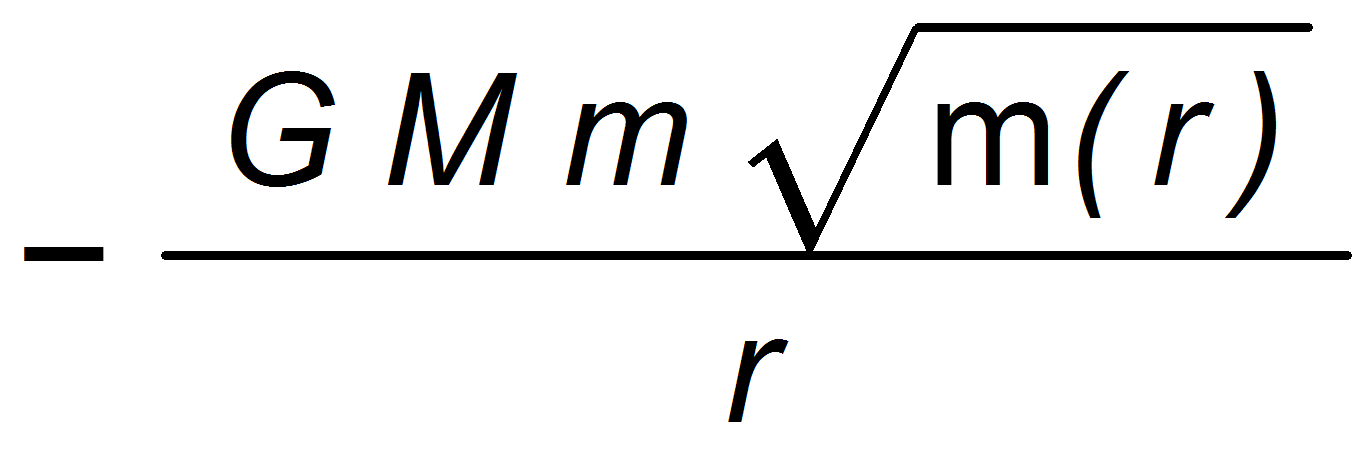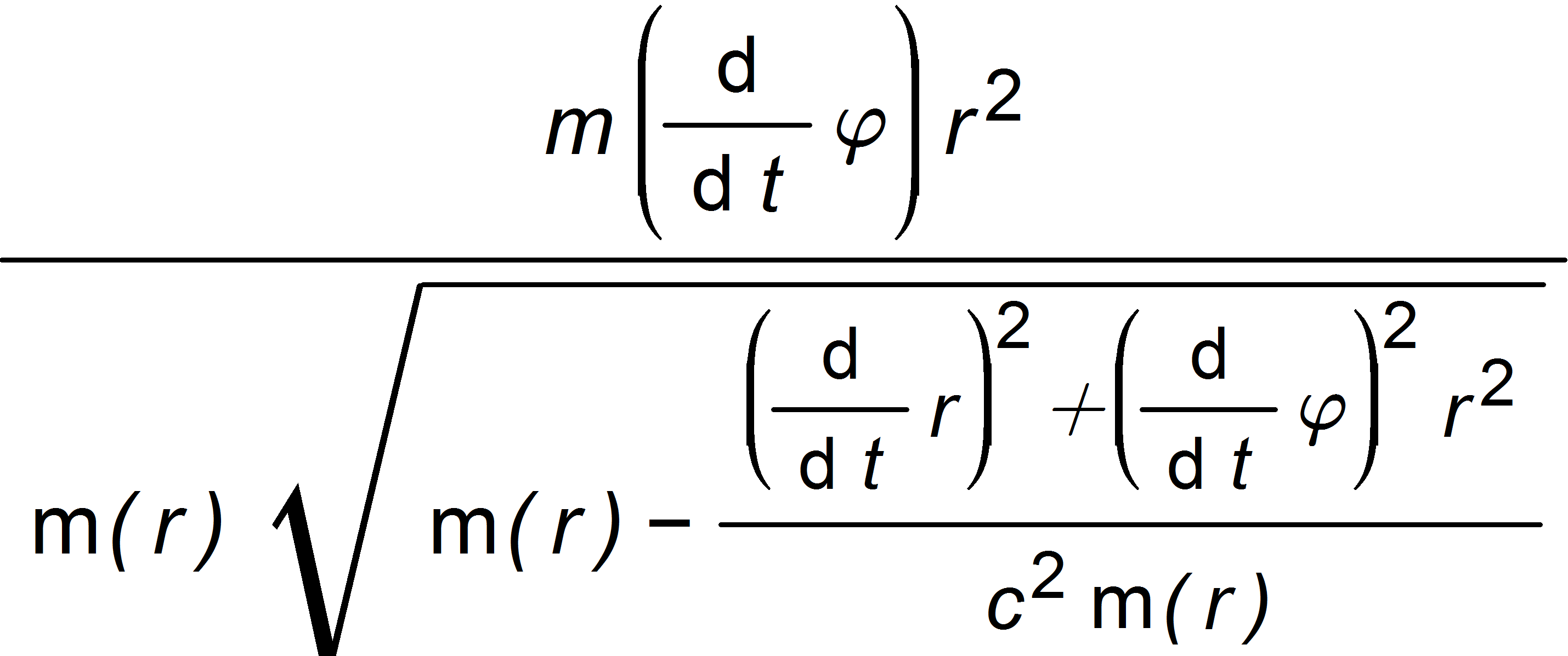425(2): New Equation for dm(r1) / dr1
Many thanks for this interesting protocol. This is an interesting and important problem and to eliminate any possibility of human error the equations can be solved entirely by computer. The fundamental equation being used is partial L / partial r = – partial H /partial r. The calculation depends on the choice of conjugate generalized coordinates p and q in Hamiltonian dynamics. If relativistic momentum p and r have are chosen as canonical variables, partial p / partial r = 0. In Lagrangian dynamics the generalized coordinates q dot and q are conjugate, so in Lagrangian dynamics partial q dot / partial q = 0. We have H = p q dot – L where H is the hamiltonian and L the lagrangian (Eq. (6.153) of Marion and Thornton, third edition). From the Hamilton and Lagrange equations p dot = – partial H / partial q = partial L / partial q. So the above equation is obtained with q = r. It follows that partial (p q dot) / partial q = 0. These are the fundamental equations being used, in the frame (r1, phi), with: H = m(r1) gamma m c squared – mMg / r1
L = – m c squared / gamma + mMG / r1
gamma = (m(r1) – (r1 dot squared + r1 squared phi dot squared)) / c squared) power minus half
I have made a few more calculations by hand and will send them around today, making a precise definition of the problem for the computer to take over to calculate everything from beginning to end, coming up with various important solutions. In Eq. (67) of the last Note, one possibility for constant m(r1) is dphi / dt = 0 for any m(r1). That gets rid of the problem of imaginary solutions that you mention below.
425(2): New Equation for dm(r1) / dr1
It is a good hint that eq.(66) could be used to determine m(r1). This diff. eq. cannot be solved by Maxima, only partially giving a log expression for m, see eq. E57e. This could be used as a starting point for an iterative solution but one has to keep in mind that the trajectories r1 and phi have to be computed a priori from a given m(r1). This would define a self-consistency cycle as is used for atomic physics where the exact potential is not known a priori.
I did some tests with m=const, however I arrived at imaginary gamma’s for m=1, here m=-1 seems to be required. Maybe something is still wrong in the calculations.
Horst
Am 19.12.2018 um 07:58 schrieb Myron Evans:
425(2): New Equation for dm(r1) / dr1
Many thanks again, the computer check is a great help as usual. I went through the protocol and its O14 is the same as Eq. (65), so a factor 2 must be put in front of the right hand side of Eq. (66). This was just a typo. Eq. (67) is another human error, the right hand side of Eq. (67) should contain the factor (1 + gamma squared m (r1)) / (gamma squared m(r1) – 1), and this should appear in Eq. (70). In the limit of flat spacetime, dm(r1) / dr1 is zero in Eq. (66), so in this limit dphi / dt = 0, and v sub N = r1 dot, the inertial frame. So a lot of new information, and equations, emerge from the use of the Hamilton equations. Many more developments are now possible. Eq. (66) is a differential equation for m(r1), so m(r1) it is no longer empirical. The other Hamilton equation gives a new equation, and there are also vector Hamilton equations. I am working on this now. Finally I checked that the Hamilton equations work fine for special relativity, or flat space. They are of course related to the Evans Eckardt equations and Euler Lagrange equations. The great elegance of classical dynamics can only be appreciated if all the available equations are used.
New Equation for dm(r1) / dr1
I could reproduce eq.(66), with a missing factor of 2. How did you arrive at 67? Where did the m(r1) functions go?
Horst
Am 16.12.2018 um 13:56 schrieb Myron Evans:
425(2): New Equation for dm(r1) / dr1
The use of the Hamilton canonical equations of motion is shown in this note to lead to a new expression of dm(r1)/ dr1 in terms of the angular momentum L in Eq. (70).
dm(r1) / dr1 = – L squared / (c squared gamma squared m squared r1 cubed)
so m(r1) is constant unless there is an angular momentum present, another amazing result of m theory, although I say it myself. So the power of the Hamilton canonical equations becomes immediately apparent. It is clear that dm(r1) / dr1 is related to the centrifugal force L squared / (m r1 cubed). Hamilton derived his Hamiltonian dynamics in 1833 from the earlier Lagrangian dynamics, based in turn on work by Euler. Although he is always known as Rowan Hamilton in Trinity College Dublin, where I am sometime Visiting Academic, he became Sir William Rowan Hamilton, Irish Astronomer Royal, and a predecessor as Civil List Pensioner. He was offered F. R. S. but could not afford the fees. Clearly, he was not terribly interested in paying the fees, and the fact that he was not an F. R. S. does not mean a thing, the important things are the Hamilton dynamics, the hamiltonian, the Hamilton Principle of Least Action, his discovery of quaternions, and many other major discoveries. He was also a poet, not the greatest who ever lived, but nevertheless a poet. The entire subject of quantum mechanics is based on the hamiltonian, as is very well known.
425(2)-a.pdf

